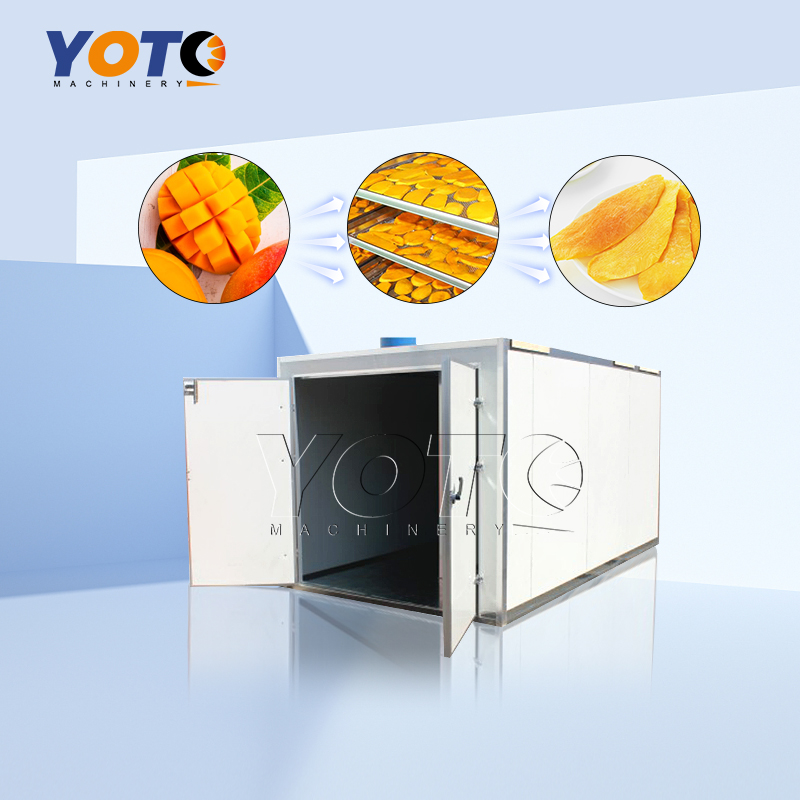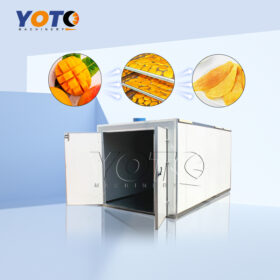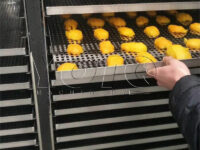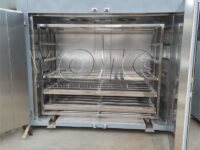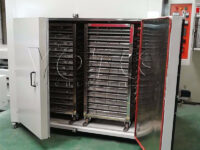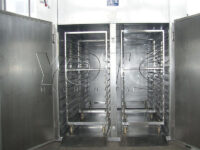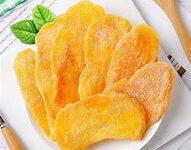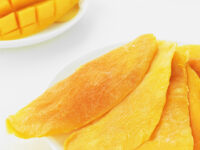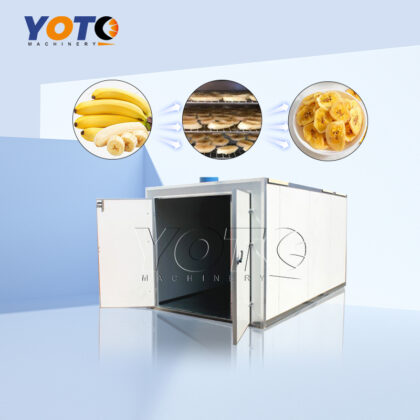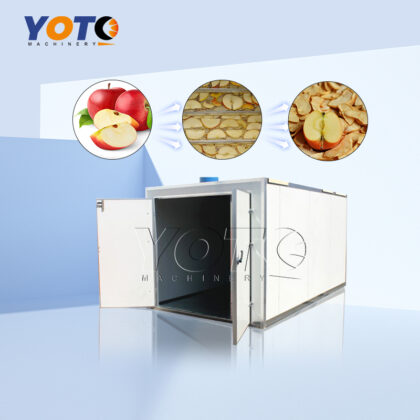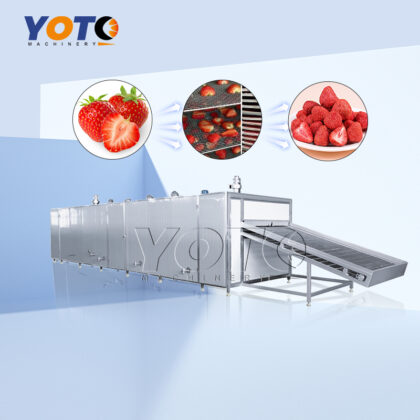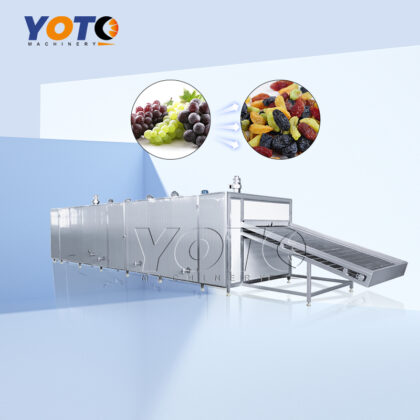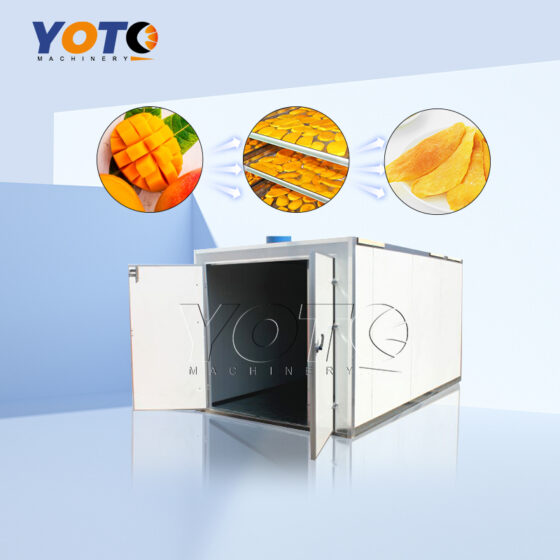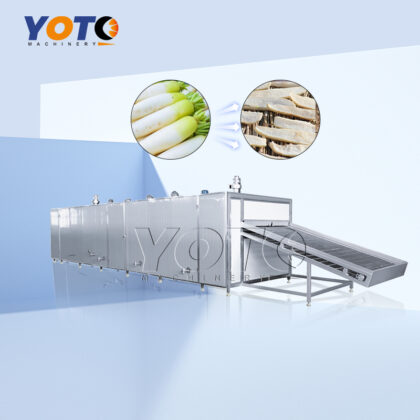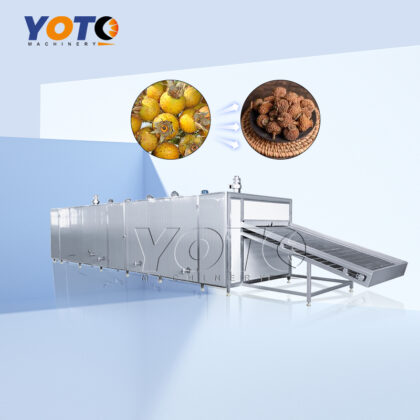Mango originated in South Asia and is mainly distributed in tropical and subtropical regions, including India, Southeast Asia, Central and South America and Africa. Mango is a delicious, nutritious fruit with high nutritional value and is very popular among people.
Our customers prefer this drying oven because of its low noise and high-temperature proof axial flow blower, as well as automatic temperature control system. The forced hot air heated by electric, steam or gas, circulates within the chamber. And the circulation system is fully enclosed to make that the heat efficiency of the drying oven increases from 3~7% of the traditional drying oven to 35~45% of the present one. The highest heat efficiency can reach 50%. This enhances heat transfer, increases moisture evaporation rate, and reduces drying time. Besides, the oven is made of food grade stainless steel 304 material to assure you safe production.
- Product Details
- Parameters
- Features
- Drying process
- Applications
- Inquiry
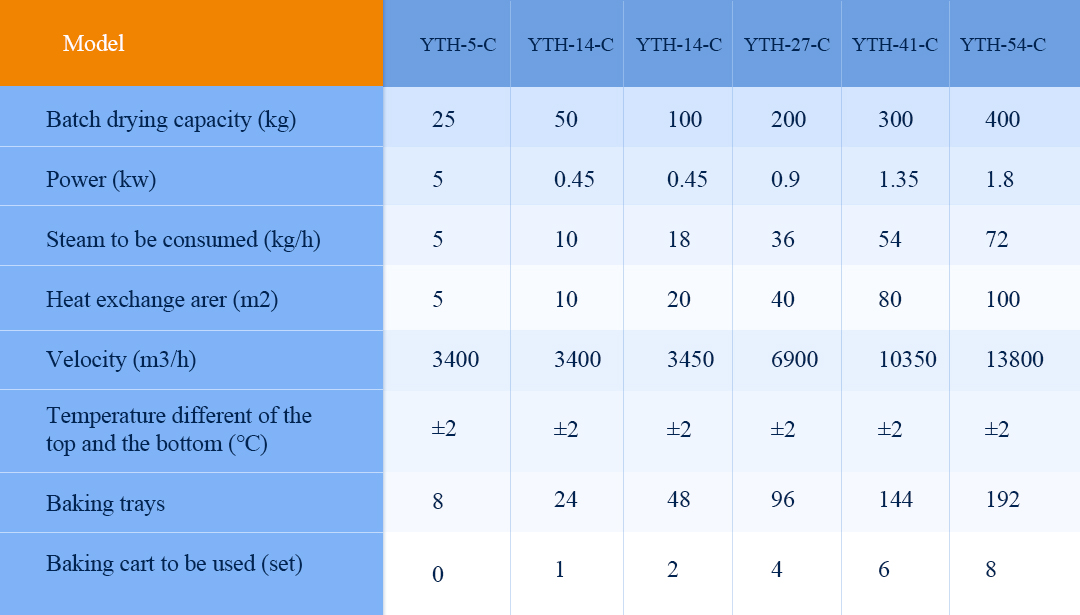
1.The entire enclosure adopts a fully enclosed structure, enabling efficient utilization of internal circulating hot air for energy savings.
2. Multi-stage temperature control, uniform temperature adjustable
3. Equipped with an integrated high-temperature-resistant long-axis fan, ensuring forced circulation of hot air and significantly minimizing heat loss during circulation.
4. Insulation layer adopts asbestos to further reduce heat loss.
5. Drying carts and trays adhere to industry-standard specifications, offering a variety of tray styles suitable for diverse industries and interchangeable usage.
6. The machine operates with low noise and balanced performance, featuring self-temperature control and easy installation and maintenance. It is versatile and can dry various materials, making it a general-purpose drying equipment.
Step 1: Do some preparation. Select ripe mangoes that are not too soft. Overly ripe mangoes can become too mushy during the drying process.Then, wash the mangoes thoroughly and peel them, then cut them into suitable shapes, such as slices or chunks.
Step 2: If it is necessary, you can also lightly coat the mango slices with a thin layer of honey or syrup to add sweetness and prevent excessive drying.
Step 3: Mangoes should be evenly placed on the tray. Preheat the drying oven to a low temperature suitable for drying fruits, typically between 120°F to 140°F (about 50°C to 60°C).
Step 4: During the backing process, mangoes should be rotated and checked periodically until become the suitable dryness.
Step 5: Once dried, Store the dried mango slices in an airtight container or sealed bags in a cool, dry place away from direct sunlight.
Users can adjust the drying process according to their needs during actual use.
Fruit: Mango, banana, apple, strawberry, grape, lemon, longan, apricot, fig, tangerine, persimmon, pineapple, rosa roxburghii tratt, golden berry, grapefruit, loquat, cantaloupe, wax berry, start fruit, pawpaw, lychee, jackfruit, pitaya, arecanut etc.
Vegetable: tomato, cassava, potato, chili, yam, mushroom, agaric, ginder, onion, garlic, radish, beet root, eggplant, bitter, oyster mushroom, pumpkin etc.
Sea food: sea cucumber, squid, fish, shrimp, kelp etc.
Flower&Leaf: rose, jasmine,osmanthus,chrysanthemum,tea leaf,tobacco etc.
Prev: Banana Drying Oven
 fruit and vegetable drying machines
fruit and vegetable drying machines

